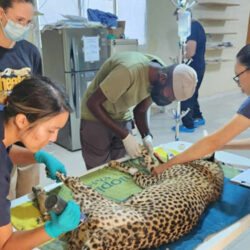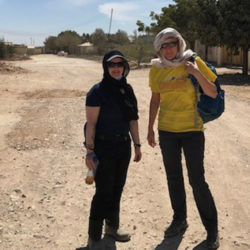Goat Milk, Toothaches, and Studying Hornbills
-
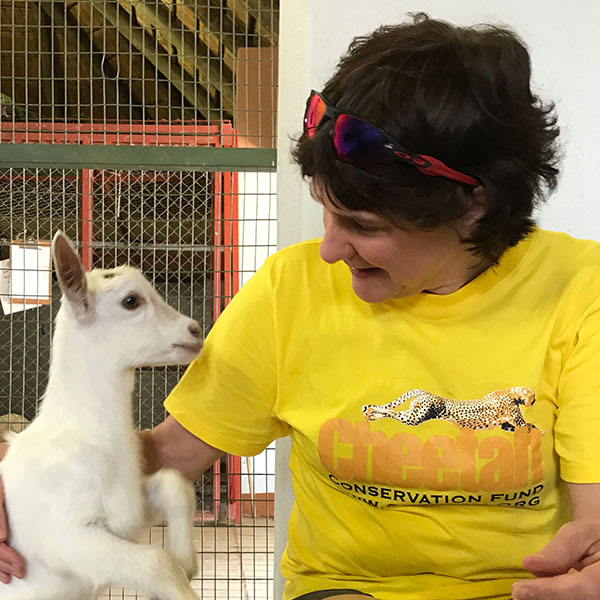
- by Alison Wheeler January 30, 2020

My daily commute has really improved here at CCF! Rather than the joys of the A23 and the roadworks at Junction 10😞I have to walk about five minutes past the lovely cheetahs above which always distract me. The cheetah above looks like he’s just waking up as well.
Here at CCF as well as looking after 42 Cheetahs and about 20 Livestock Guarding Dogs there is also a Model Farm. The Model Farm is where local farmers are trained in predator-friendly farming techniques. One of the training programs is in livelihood development. CCF encourages diversification of production for local farmers so that they can learn how to gain additional income sources from their land and animals. This is the busiest part of the year at the Model Farm – with over 25 baby goats born in January alone.
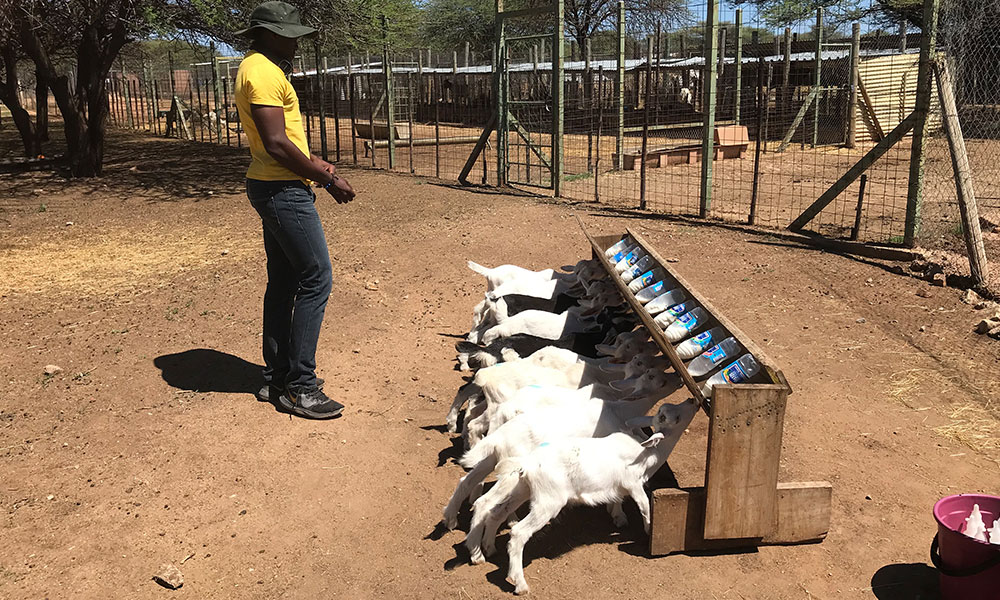
Goat milk is used at the Dancing Goat Creamery to make products such as cheese, fudge, soap and delicious ice cream which is sold in the Cheetah Cafe and shop. Occasionally the goodies are eaten by working guests! Around half of the milk produced is fed back to the baby goats. One of the baby goats was injured and spent time in the clinic and required hand feeding as you can see. The others were mass fed via a very clever multiple bottle holder.
I was part of the team that helped to vaccinate the adult goats. My job was to help corral 130 reluctant goats towards the vet team holding the little syringes. I learned that goats can be distinctly uncooperative when they don’t want to go somewhere! I worked up quite a sweat.
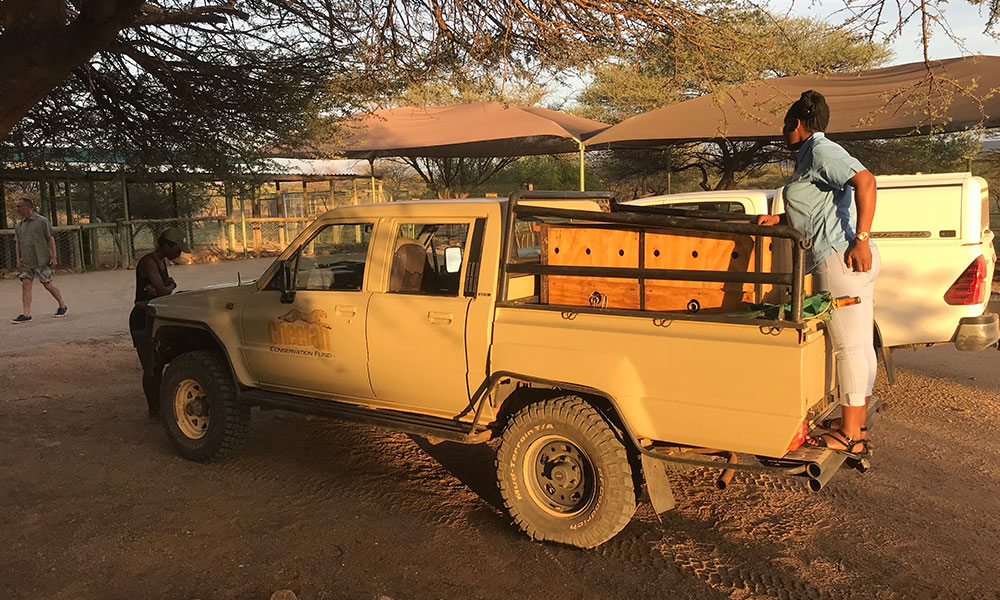
When a cheetah has a toothache they have to visit the dentist just like us. In fact they go to a very nice obliging human dentist in Otjiwarongo. They go in a special travel box. They are then sedated before the work begins.
If a cheetah cannot use their teeth properly they cannot catch game and rip it open so it is essential for their survival in the wild to have good dental health. CCF recently collected a cheetah mum and her 4 cubs that were caught in a farmers trap and bought them back to CCF to check their health before finding a suitable release location. This cheetah mum had a broken canine and needed root canal treatment to ensure she remained healthy and no bacteria could get in and cause infection. This treatment was important before being released as she needs to be able to catch and kill game to feed herself and her 4 cubs so a visit to the dentist was necessary.

I have met a wide range of people here at CCF. Dr Mark Stanback is here from the US studying hornbills. These noisy birds with big beaks liked tapping on my window in the morning (see above).
I assisted Mark in weighing and measuring baby hornbills with another volunteer named Morgan. Morgan is from the US and she is very interested in cheetah scat.
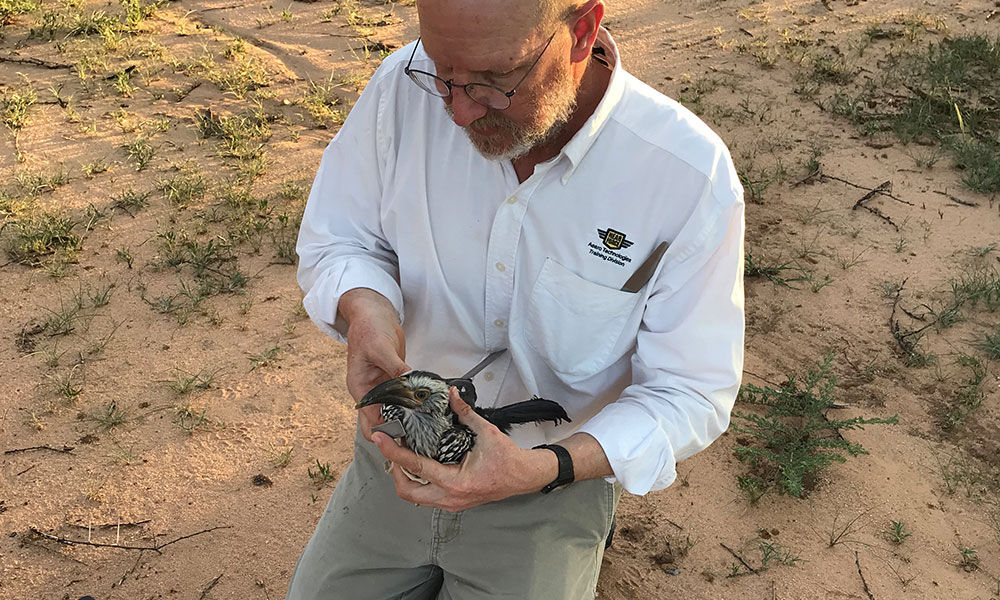
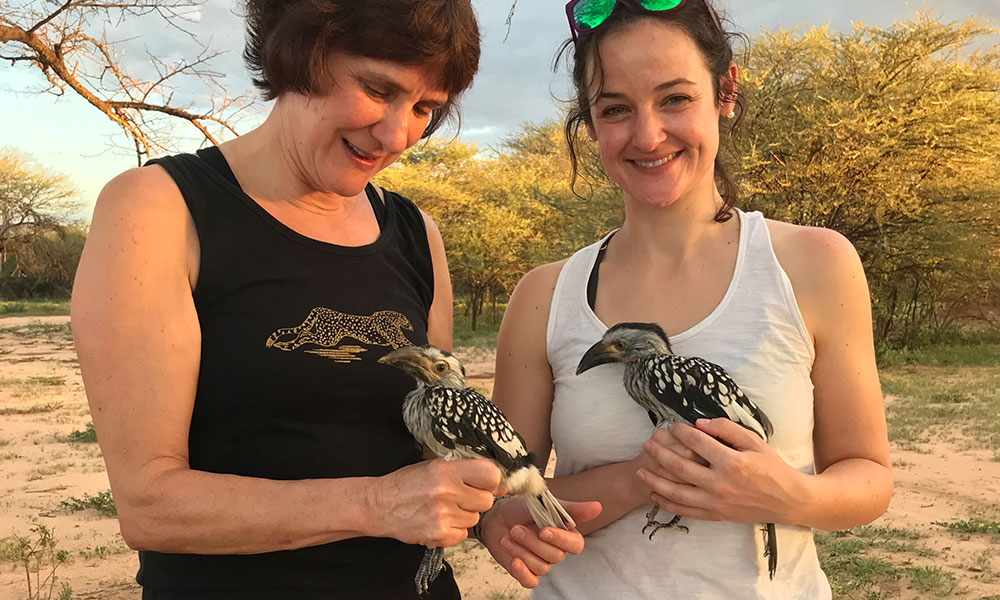
She’s doing a project to look at how the cheetah gut microbiome changes with their diet. The poo is the easiest way to measure gut microbes, so I’ve spent a few hours watching cheetahs waiting for them to poo so that can help her along. For the purposes of her project she had to record exactly when the Cheetah had pooed and how long before it was analysed.
Related Reading
-
March 1, 2024
My Hands-On Conservation Experience with CCF -
February 2, 2022
Life in Somaliland for a CCF Volunteer


